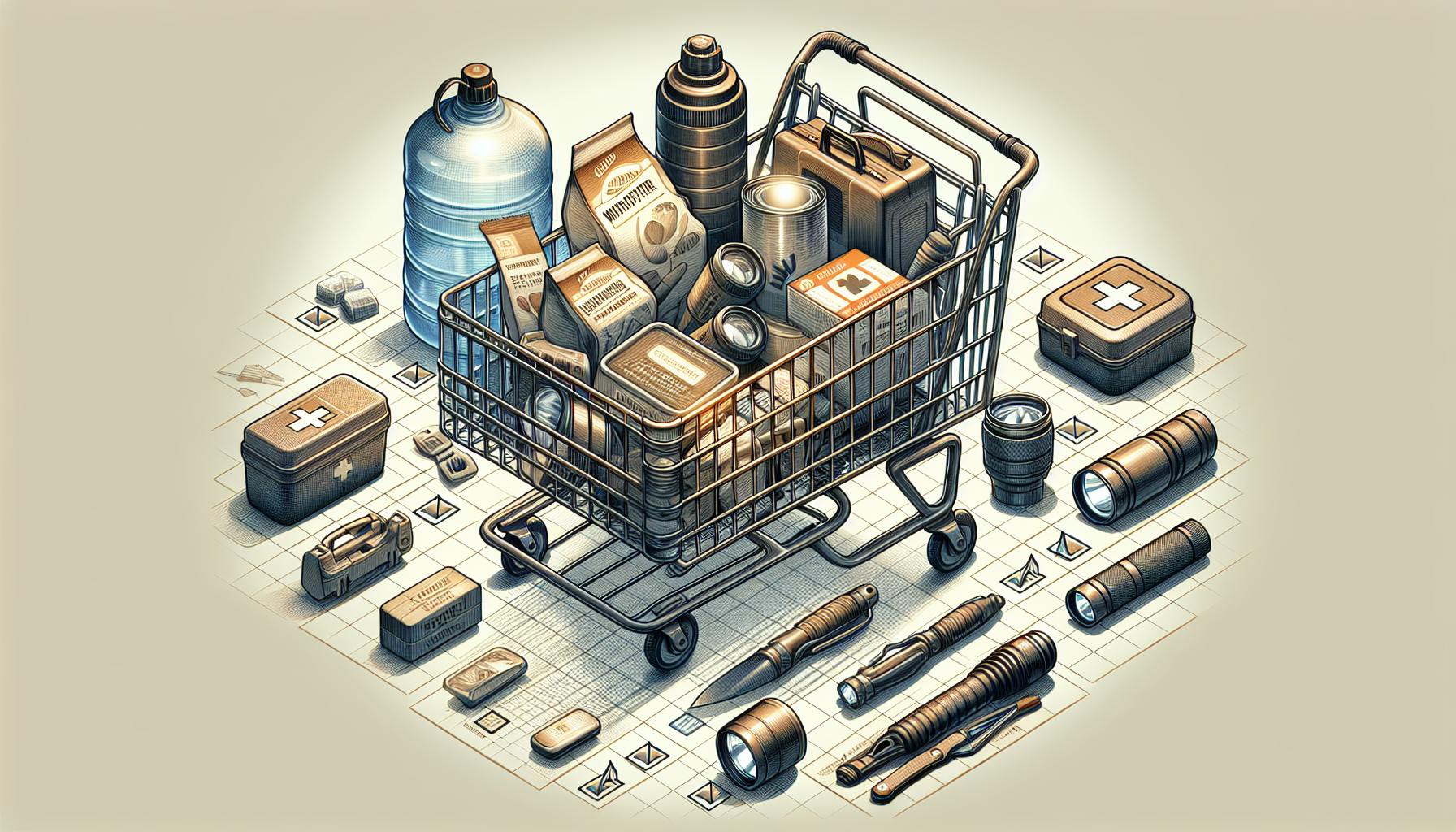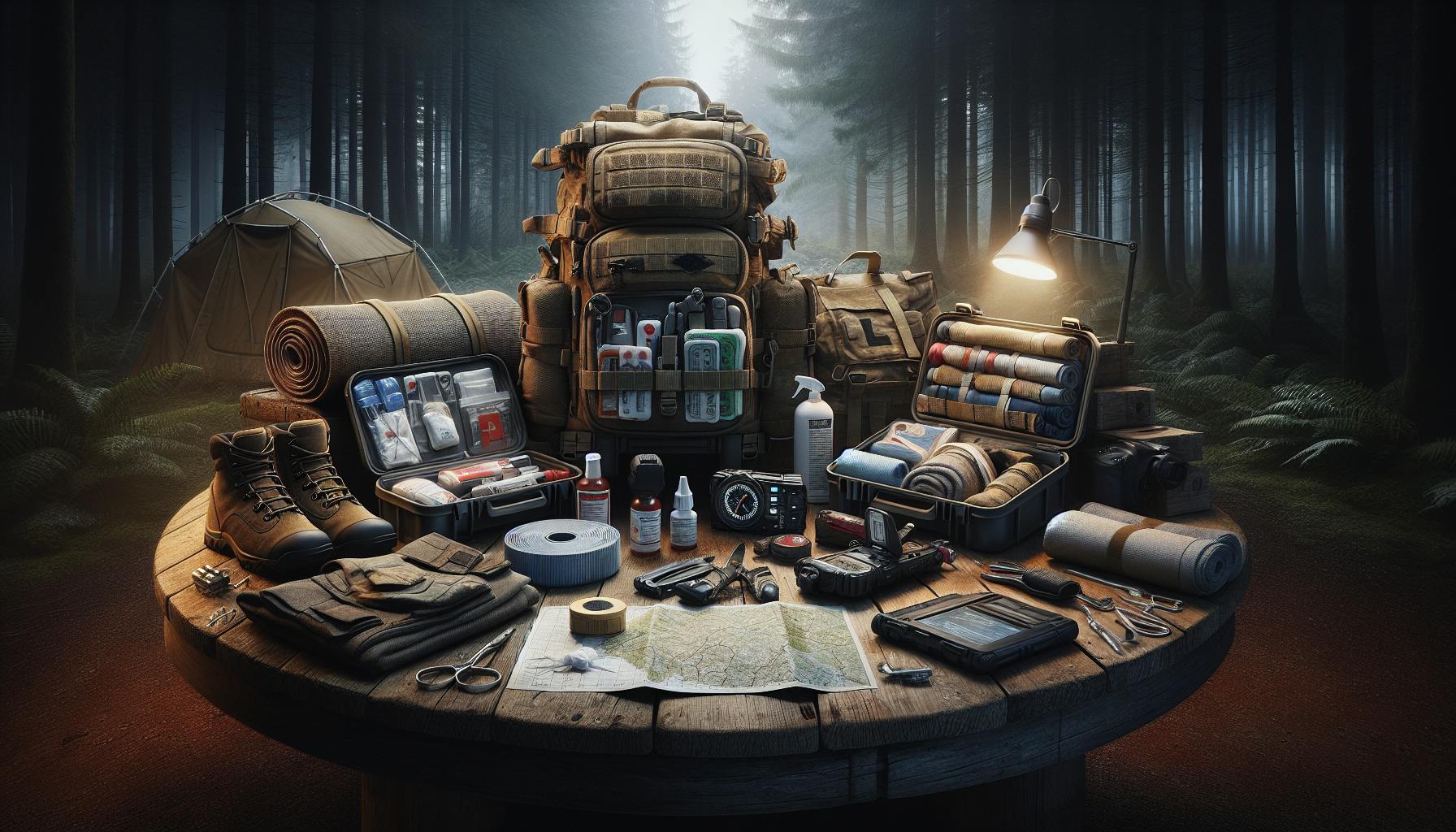Building a well-stocked emergency food supply is one of the most important preparedness steps for every household. Having food reserves ensures your family will stay fed and healthy if a natural disaster, economic crisis, or other emergency interrupts normal access to groceries and supplies. However, creating an effective emergency food stockpile requires careful planning and forethought. Simply buying up canned goods or junk food at random will leave your stockpile lacking in both nutrition and long-term viability.
This comprehensive guide covers everything you need to know to build a complete and balanced stockpile tailored to your family’s unique needs. We’ll provide tips and recommendations on assessing your food storage needs, choosing shelf-stable staples, supplementing with water and other essentials, maintaining your stockpile over time, and much more. Follow this emergency food stockpile checklist to gain the peace of mind that comes with being fully prepared.
Introduction
Being caught without emergency food reserves during a crisis is incredibly stressful and dangerous. Empty grocery shelves, supply chain issues, and lack of utilities can make accessing food difficult or impossible for days, weeks, or longer in a true disaster scenario. Having nutritious food stockpiled provides a buffer so your family avoids hunger until normalcy resumes.
However, stockpiling involves much more than just buying some extra canned goods. A disorganized mishmash of food won't sustain you for long. And improperly stored food may spoil or go to waste. With some planning and forethought though, you can create a complete, customized stockpile using bulk dry goods, canned items, and other essentials tailored to your household's preferences and dietary needs.
This comprehensive guide from WeLovePrepping will walk you through building a robust emergency food supply from start to finish. We'll cover:
- Stockpiling basics - how much, what types of food, storage considerations
- Must-have food categories and staple ingredients
- Special diet and nutrition considerations
- Vital non-food essentials - water, first aid, sanitation
- Storage and maintenance best practices
- And much more!
Equipped with the information in this emergency food stockpile checklist article, you'll be able to construct a well-rounded stockpile that truly meets your family's unique needs while avoiding common pitfalls like buying too much processed food or failing to factor in dietary restrictions. Let's get started!
Stockpiling Basics
Before you start pulling items off the shelf, dedicate some time to laying the groundwork for your stockpile. Carefully considering the following factors will help you build an appropriately-sized supply of the right foods to meet your household's needs:
Household Size - The number of people you need to feed will directly impact how much food you should stockpile. Recommendations for a basic 3-day supply are:
- 1 adult - 9 meals, 3L water
- 1 child - 6 meals, 3L water
- Add 3 meals and 1L of water per additional person
Available Storage Space - Shelf-stable foods require a cool, dry storage area. Make sure to measure your existing storage space as you evaluate stockpile size. 5-gallon plastic buckets or Rubbermaid totes work well for compact storage.
Budget - Consider what you can realistically afford to invest upfront vs. gradually over time. Prioritize staples like rice, beans, canned goods. Shop sales and buy in bulk.
Dietary Needs & Calorie Requirements - Account for ages, activity levels, medical conditions, allergies, religious restrictions and everyday preferences.
With your basics nailed down, it's time to start choosing your stockpile foods...
Water Storage Considerations
Alongside food, clean water is one of the most vital stockpile necessities. Plan for at least 1 gallon of water per person per day for drinking, food prep, hygiene and cleaning. More is recommended for hot climates, children, nursing mothers, and pets.
There are many options for water storage containers, each with pros and cons:
- 2-7 gallon plastic jerry cans - durable, portable, budget-friendly
- 55 gallon plastic or metal drums - high capacity for large households
- 5 gallon BPA-free plastic bottles - versatile, reusable
- Collapsible portable containers like Reliance Aqua-Tainer - lightweight but prone to punctures
No matter the container, focus on finding food-grade materials approved for water storage, with a reliable seal. Always hand wash containers before filling. Replace stored water at least every 6 months. Consider water filtration and purification options like the LifeStraw Personal Water Filter or boiling as a backup.
Key Food Categories to Stockpile
When reviewing your storage space, think about which shelf-stable foods from each key nutritional category make the most sense for your family:
Grains - Rice, oats, pasta, flour, crackers. Focus on whole grains. Consider 50 lb bags for bulk savings.
Beans & Legumes - Canned or dry lentils, black beans, chickpeas, etc. Excellent source of plant-based protein.
Canned & Jarred Goods - Canned meats, fruits, vegetables, soups and sauces. Look for low sodium options from brands like Amy's Kitchen.
Fats & Oils - Cooking oils, shelf-stable milk like Parmalat, nut butters like Jif or Skippy.
Dried Fruits & Vegetables - Raisins, apples, banana chips, carrots, potatoes. Buy in bulk from Nuts.com or Honeyville.
Nuts & Seeds - Almonds, walnuts, sunflower seeds, pumpkin seeds, etc. Store in cool location.
Comfort Foods - Honey, syrup, jams, chocolate, candy, coffee, tea, spices. Consider morale-boosters like Jelly Belly jelly beans.
Build your supply using familiar ingredients you already eat, while keeping nutritional needs in mind. Include comfort foods for morale. Trial new shelf-stable items to add variety.
Special Diet Considerations
When stockpiling food, accommodate any special dietary needs, restrictions, or allergies in your household.
For infants, stockpile ample formula, jars of baby food, and snacks like Gerber graduates or Plum Organics pouches. Those with diabetes should store suitable snacks like peanut butter or cheese crackers that won't spike blood sugar. Carefully check all labels for food allergens like nuts or dairy.
Gluten-free households should stockpile certified gluten-free oats, pastas like Barilla or Jovial, and snack bars from brands like KIND. Families avoiding dairy can choose non-dairy milk alternatives like soy or almond milk and lactose-free canned coconut milk.
Vegetarian proteins like beans, lentils, natto, and canned fish provide options for non-meat eaters. Try shelf-stable tofu or textured vegetable protein as ground beef substitutes. Vegan staples like canned fruits and vegetables, peanut butter, grains, nuts and seeds are versatile options.
With some adjustments, specialized diets and restrictions can be fully accommodated in an emergency food stockpile. Focus on substitutes for common allergenic ingredients as well as supplements like condiments to enable dietary preferences.
Food Storage Tips
Proper storage is key to maximizing shelf life and preventing spoilage or waste. Follow these storage best practices:
-
Store in a cool, dry, dark location if possible. Avoid temperature fluctuations.
-
Use oxygen absorbers and desiccants to remove moisture.
-
Repackage bulk items like rice, pasta, flour into smaller 1-2 cup servings in airtight containers.
-
Label everything with name and date for easy identification. Use FIFO (first-in, first-out) rotation.
-
Inspect storage area and food packages every 3 months for signs of moisture, pests, or spoilage.
With some organization and planning, you'll have peace of mind knowing you have a balanced, robust emergency food supply ready when you need it. Next, let's look at other critical supplies to complement your stockpiled food.
Stockpiling Non-Food Essentials
While food may be the first thing that comes to mind for stockpiling, a comprehensive emergency supply also includes key non-food items:
- First aid supplies and medications
- Hygiene and sanitation products
- Alternate cooking equipment
- Lighting, fuel sources, backup power
- Tools for repairs and self-reliance
- Comfort items for stress relief and normalcy
Preparing these vital categories will provide complete support until regular services and supply chains are restored.
First Aid Preparedness
Medical issues don't pause for disasters. Ensure your family is covered with a well-supplied first aid kit and key medications:
- Sterile dressings, bandages, gauze, tape, disinfectant
- Antibiotics, antidiarrheals, epi-pens, inhalers
- Prescriptions - stockpile extras if possible
- Supplies for chronic conditions like diabetes
- First aid handbook and emergency medical reference guide
Top 10 essentials to stockpile: bandages, gauze, antibiotic ointment, ibuprofen, acetaminophen, thermometer, tweezers, trauma shears, sterile gloves, emergency blanket. Recommended quantities vary by household size - for example, stockpile 100 bandages for a family of 4.
Rotate and refresh kits every 6 months as supplies expire.
Sanitation Supplies
Maintaining basic sanitation prevents disease. Have ample reserves of:
-
Hand sanitizer, bar soap, disinfecting wipes
-
Toilet paper, paper towels, tampons, diapers
-
Waste and bathroom bags, bucket toilet supplies
-
Household cleaners, sponges, bleach, scrub brushes, gloves
-
Toothpaste, feminine products, toiletries
Routine handwashing will be critical, so stockpile plenty of antimicrobial hand soap.
Tools and Equipment
Specialized tools allow you to handle challenges independently if utilities and external services are interrupted:
-
Alternate cooking devices - grills, camp stoves, fuel sources like propane
-
Backup lighting like flashlights, lanterns, glow sticks
-
Extra batteries, generators, solar chargers like Goal Zero
-
Manual can opener, mess kits, plates and utensils
-
Wrench sets, plumbing tools, sewing kits, work gloves
Ensure equipment is tested quarterly and maintained so it’s ready immediately when disaster strikes.
Miscellaneous Supplies
Some final categories round out a complete stockpile:
- Pet food and medications
- Infant formula, diapers, wipes
- Entertainment like dice, playing cards, books
- Cash in small bills
- Paper maps, emergency contact list
Remember to account for every family member, including pets! Avoid boredom and boost morale with multi-purpose games, hobbies, and comfort items.
Comfort Foods for Stress Relief
Don't underestimate the value of comfort foods for providing a sense of normalcy and relieving stress in emergency scenarios. Prioritize taste-of-home favorites:
- Honey, syrup, jams, Nutella, chocolate bars
- Hard candies like Jolly Ranchers, Werther’s Originals
- Instant coffee, tea bags, hot chocolate, cider packets
- Cookies, granola bars, snack cakes
- Spices and seasonings to liven up meals
Treats can't replace nutritious staples, but small indulgences contribute greatly to mental wellbeing when times get tough. Stock up on affordable comforts your household enjoys.
Maintaining Your Stockpile
Building your stockpile is just the first step - proper maintenance keeps it viable for the long haul. Follow these best practices:
Organization and Inventory
- Catalog all items, expiration dates, and locations. Update inventory every 3 months.
- Group like items; label shelves and containers.
- Track what gets used day-to-day and replace as needed.
Proper Storage Conditions
- Store in cool, dark location in airtight containers if possible.
- Prevent humidity and temperature fluctuations.
- Keep food off concrete floors to avoid moisture absorption.
Rotation and Replacement
- Follow FIFO (first-in, first-out) principles to use oldest food first.
- Inspect quality and watch expiration dates.
- Gradually cycle in replacements 6 months prior to expiration.
Trial Runs
- Test stockpiled food periodically to ensure viable taste and texture.
- Verify usability of water supplies and filtration.
- Make notes on changes or improvements needed.
With consistent maintenance like taking inventory, rotating stock, testing supplies, and replacing expired goods every 6 months, your emergency stockpile will offer reliable support for years to come.
Key Takeaways
Creating a well-rounded emergency food stockpile tailored to your household is one of the most important preparedness steps you can take. Follow this emergency food stockpile checklist to build a complete supply:
- Assess your unique needs and restrictions
- Stockpile a variety of staple foods and ingredients
- Include alternate cooking tools, fuel, lighting, power
- Don't forget water, first aid, hygiene, sanitation supplies
- Store items properly and maintain inventory
- Gradually build over time for budget-friendliness
- Test and replace stock as needed
Being prepared with adequate food, water, and essential supplies brings invaluable peace of mind. We hope this comprehensive emergency food stockpile checklist guide from WeLovePrepping gave you a starting point and plan to create your own custom stockpile. Remember, each small step of progress will take your family's preparedness to the next level.


